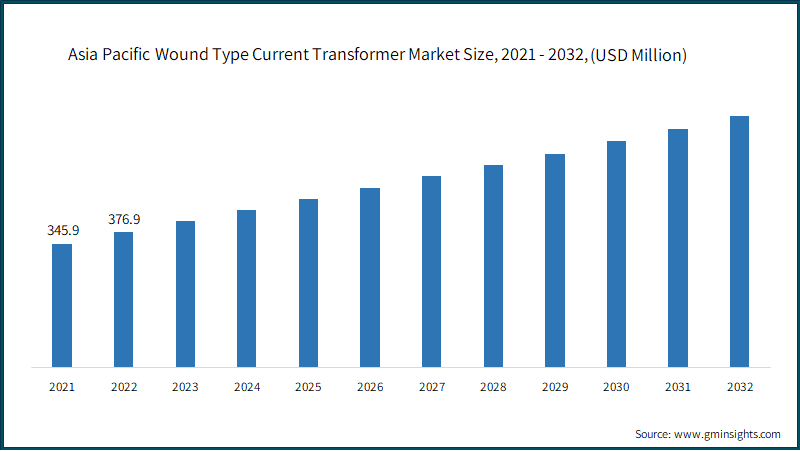Home > Energy & Power > Electrical Equipment > Transformers > Wound Type Current Transformer Market
Wound Type Current Transformer Market Analysis
- Report ID: GMI7431
- Published Date: Nov 2023
- Report Format: PDF
Wound Type Current Transformer Market Analysis
The oil immersed current transformers market held around 75% of the revenue share in 2022 and is projected to attain 5.5% CAGR through 2032. Oil-immersed wound type current transformers offer several advantages over alternative technologies. Their robust design ensures durability and reliability in harsh environments, making them ideal for heavy-duty applications. The use of oil as a coolant enhances their thermal conductivity, enabling efficient dissipation of heat generated during operation, thus preventing overheating. This design also allows for higher insulation levels, ensuring better protection against electrical faults. Additionally, oil-immersed transformers exhibit excellent accuracy in current measurement, providing precise readings even in fluctuating electrical conditions.

The ≤ 33 kV segment valuation crossed USD 780 million in 2022 and is projected to exhibit about 6% CAGR up to 2032. The soaring global need for electricity, driven by factors like population growth, urbanization, and industrialization, has led to a significant market share for wound type current transformers. The demand for these transformers up to the 33 kV voltage level is propelled by the expansion of power distribution and infrastructure. As countries invest in improving their transmission networks, the requirement for low-voltage wound type CTs is set to rise. These transformers are crucial in medium-voltage distribution systems, ensuring a reliable and efficient electricity supply.
The wound type current transformer technology finds diverse applications in sectors such as power distribution, manufacturing industries, and more. Within this landscape, the power distribution sector emerges as a pivotal driver for the growth of the wound type current transformer market. As the demand for efficient and reliable energy distribution amplifies, these transformers play a pivotal role in measuring and monitoring current flow. The emphasis on modernizing existing power infrastructure and integrating renewable energy sources fuels this growth. With advancements in technology, such transformers are becoming more compact, accurate, and adaptable to diverse power distribution networks.

Asia Pacific wound type current transformer market is forecasted to exceed USD 690 million by 2032, driven by escalating demands for more effective Transmission & Distribution (T&D) systems. This region is experiencing substantial growth due to ongoing expansions and upgrades within energy networks, alongside a growing necessity for efficient peak load management. The adoption of smart monitoring units and substantial investments in infrastructure across commercial and industrial sectors are key factors bolstering the demand for these transformers. Additionally, favorable regulatory policies aimed at enhancing grid reliability and modernizing grid networks create a conducive business environment in the region.

